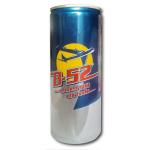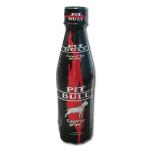
Other names for the additive (synonyms)
General Information
The colorant "Quinoline Yellow" (food additive E104) is a synthetic azo dye of yellow-green hue. It is an organic heterocyclic compound used for dissolving sulfur and phosphorus.
Quinoline Yellow was first synthesized in 1882 by chemist Jacobsen. Its production became part of the rapid development of aniline and quinoline dyes in the second half of the 19th century.
Food additive E104 is divided into two types: water-soluble (Quinoline Yellow WS) and alcohol-soluble (Quinoline Yellow SS). The chemical formula of food additive E104 is C18H9NO8S2Na2.
Visually, colorant E104 appears as a yellow or yellowish-brown powder. It is highly soluble in water due to the presence of sulfonate groups. It is stable to light, heat, and acids.
Effects on the Body
Risks of additive E104
Research indicates that the use of food additive E104 in food may contribute to increased hyperactivity in children.
Based on these studies, since 2010 EU countries have required food and drink products containing one or more of the following colorants—Sunset Yellow (E110), Quinoline Yellow (E104), Carmoisine (E122), Allura Red (E129), Tartrazine (E102), or Ponceau 4R (E124)—to include the following warning: "Name or E number of the additive: may have an adverse effect on activity and attention in children".
Additionally, additive E104 may cause skin inflammation, hives, anaphylaxis, or asthma attacks in sensitive individuals. The colorant is contraindicated in people with aspirin sensitivity.
In September 2009, the European Food Safety Authority (EFSA) decided to tighten the acceptable daily intake (ADI) limits for food additive E104. As a result, the ADI was lowered from 10 mg/kg to 0.5 mg/kg of body weight per day. This decision was based on studies indicating that excessive intake may lead to hives and rhinitis.
In 2012, the permitted levels of use of the additive in food products were reduced. Current consumption levels are below the set threshold, and the additive is considered safe at present usage levels. This is confirmed in the EFSA re-evaluation of E104, published in 2015.
Benefits of additive E104
Due to its synthetic origin, additive E104 does not occur naturally in living organisms. There is currently no scientific evidence supporting any health benefits of using food additive E104.
Uses
In the food industry, food additive E104 is used in smoked fish, groceries, beverages, and in the production of colorful dragees, hard candies, and chewing gum.
Other uses of additive E104 include:
- in perfumery, for manufacturing colognes;
- in the cosmetics industry, for lipsticks, dyes, etc.;
- in soap and hair care products;
- in the production of toothpaste;
- in pharmaceuticals (derivatives of the substance are used).
Legal Status
Food additive E104 is banned in a number of countries due to its potential negative effects on human health. For example, the use of colorant E104 in food production has been discontinued in Japan, the United States, Canada, Norway, Australia, and Austria.
In Ukraine and Russia, food additive E104 is allowed for use in food products. In the EU, Quinoline Yellow is permitted in food under the condition of mandatory labeling in accordance with Article 24 of Regulation (EC) No 1333/2008 on food additives.

